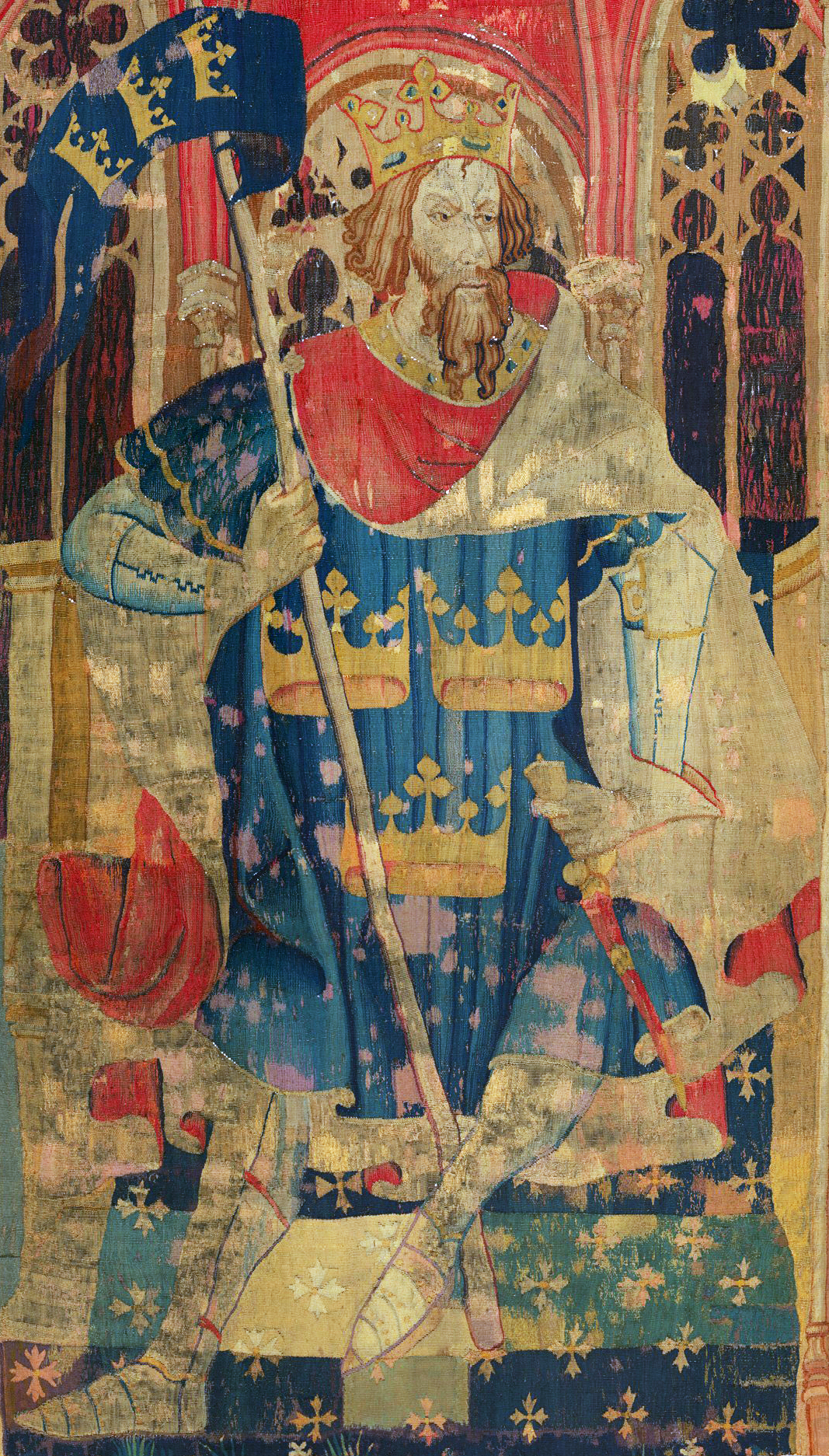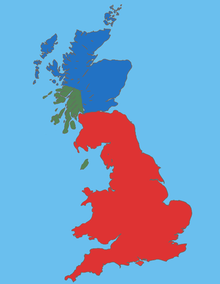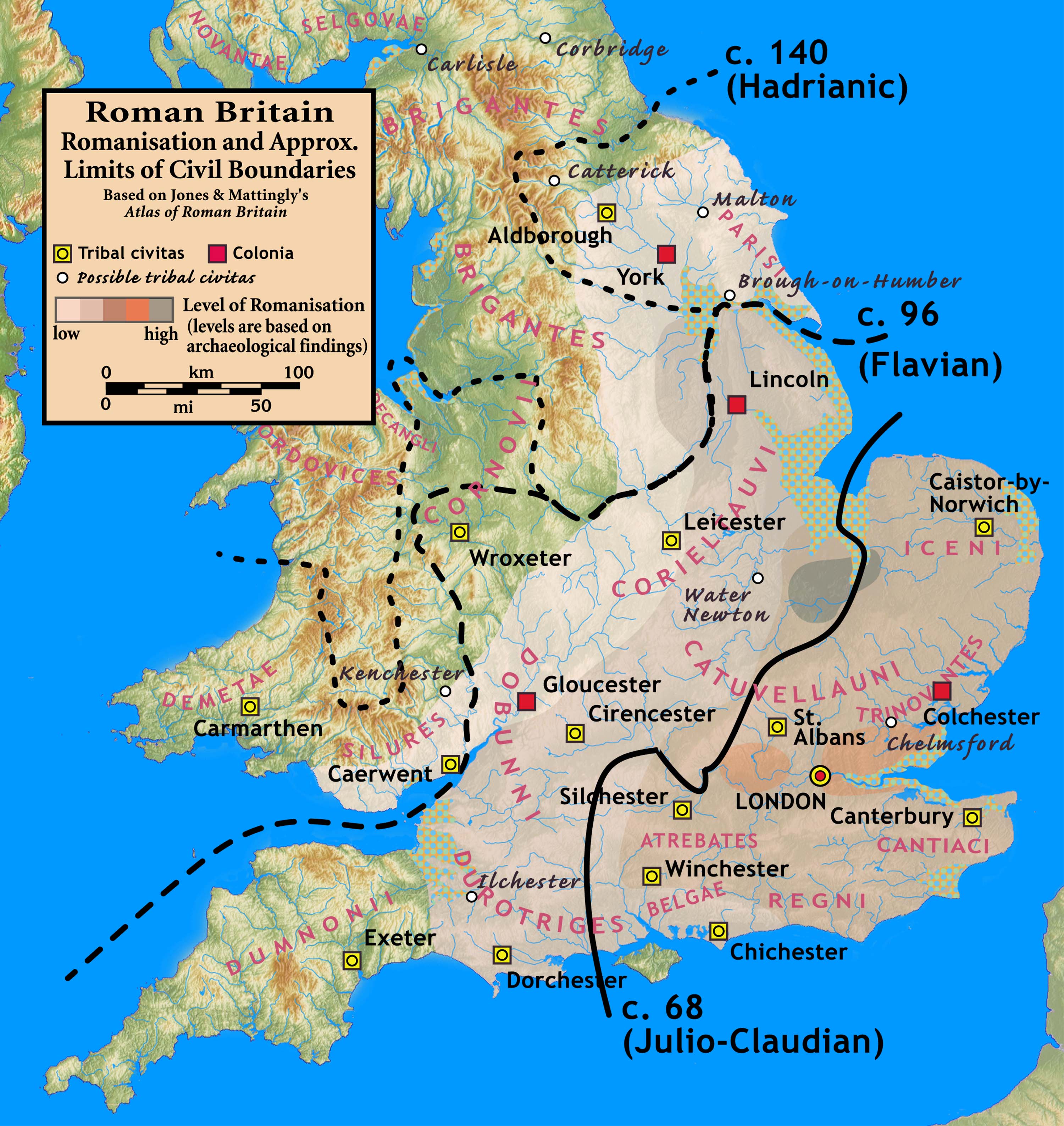|
Glastonbury Abbey
Glastonbury Abbey was a monastery in Glastonbury, Somerset, England. Its ruins, a grade I listed building and scheduled ancient monument, are open as a visitor attraction. The abbey was founded in the 8th century and enlarged in the 10th. It was destroyed by a major fire in 1184, but subsequently rebuilt and by the 14th century was one of the richest and most powerful monasteries in England. The abbey controlled large tracts of the surrounding land and was instrumental in major drainage projects on the Somerset Levels. The abbey was suppressed during the Dissolution of the Monasteries under Henry VIII of England, King Henry VIII of England. The last abbot, Richard Whiting (abbot), Richard Whiting (Whyting), was hanged, drawn and quartered as a traitor on Glastonbury Tor in 1539. From at least the 12th century, the Glastonbury area has been associated with the legend of King Arthur, a connection promoted by medieval monks who asserted that Glastonbury was Avalon. Christian legend ... [...More Info...] [...Related Items...] OR: [Wikipedia] [Google] [Baidu] |
Benedictine
The Benedictines, officially the Order of Saint Benedict (, abbreviated as O.S.B. or OSB), are a mainly contemplative monastic order of the Catholic Church for men and for women who follow the Rule of Saint Benedict. Initiated in 529, they are the oldest of all the religious orders in the Latin Church. The male religious are also sometimes called the Black Monks, especially in English speaking countries, after the colour of their habits, although some, like the Olivetans, wear white. They were founded by Benedict of Nursia, a 6th-century Italian monk who laid the foundations of Benedictine monasticism through the formulation of his Rule. Benedict's sister, Scholastica, possibly his twin, also became a religious from an early age, but chose to live as a hermit. They retained a close relationship until her death. Despite being called an order, the Benedictines do not operate under a single hierarchy. They are instead organized as a collection of autonomous monasteries ... [...More Info...] [...Related Items...] OR: [Wikipedia] [Google] [Baidu] |
King Arthur
According to legends, King Arthur (; ; ; ) was a king of Great Britain, Britain. He is a folk hero and a central figure in the medieval literary tradition known as the Matter of Britain. In Wales, Welsh sources, Arthur is portrayed as a leader of the Sub-Roman Britain, post-Roman Britons in battles against the Anglo-Saxons in the late-5th and early-6th centuries. He first appears in two early medieval historical sources, the ''Annales Cambriae'' and the ''Historia Brittonum'', but these date to 300 years after he is supposed to have lived, and most historians who study the period Historicity of King Arthur, do not consider him a historical figure.Tom Shippey, "So Much Smoke", ''review'' of , ''London Review of Books'', 40:24:23 (20 December 2018) His name also occurs in early Welsh-language literature, Welsh poetic sources, such as ''Y Gododdin''. The character developed through Welsh mythology, appearing either as a great warrior defending Britain from human and supernatura ... [...More Info...] [...Related Items...] OR: [Wikipedia] [Google] [Baidu] |
William Of Malmesbury
William of Malmesbury (; ) was the foremost English historian of the 12th century. He has been ranked among the most talented English historians since Bede. Modern historian C. Warren Hollister described him as "a gifted historical scholar and an omnivorous reader, impressively well versed in the literature of Classical antiquity, classical, patristic, and earlier medieval times as well as in the writings of his own contemporaries. Indeed William may well have been the most learned man in twelfth-century Western Europe." William was born about 1095 or 1096 in Wiltshire, England. His father was Normans, Norman and his mother English. He spent his whole life in England and his adult life as a monk at Malmesbury Abbey in Wiltshire. Biography Though the education William received at Malmesbury Abbey included a smattering of logic and physics, moral philosophy and history were the subjects to which he devoted the most attention. The earliest fact which he records of his career is tha ... [...More Info...] [...Related Items...] OR: [Wikipedia] [Google] [Baidu] |
Holy Grail
The Holy Grail (, , , ) is a treasure that serves as an important motif in Arthurian literature. Various traditions describe the Holy Grail as a cup, dish, or stone with miraculous healing powers, sometimes providing eternal youth or sustenance in infinite abundance, often guarded in the custody of the Fisher King and located in the hidden Grail castle. By analogy, any elusive object or goal of great significance may be perceived as a "holy grail" by those seeking such. A mysterious "grail" (Old French: ''graal'' or ''greal''), wondrous but not unequivocally holy, first appears in '' Perceval, the Story of the Grail'', an unfinished chivalric romance written by Chrétien de Troyes around 1190. Chrétien's story inspired many continuations, translators and interpreters in the later-12th and early-13th centuries, including Wolfram von Eschenbach, who portrayed the Grail as a stone in ''Parzival''. The Christian, Celtic or possibly other origins of the Arthurian grail trope are ... [...More Info...] [...Related Items...] OR: [Wikipedia] [Google] [Baidu] |
Robert De Boron
Robert de Boron (also spelled in the manuscripts "Roberz", "Borron", "Bouron", "Beron") was a French poet active around the late 12th and early 13th centuries, notable as the reputed author of the poems and ''Merlin''. Although little is known of Robert apart from the poems he allegedly wrote, these works and subsequent prose redactions of them had a strong influence on later incarnations of the Arthurian legend and its prose cycles, in particular through their Christianisation and redefinition of the previously ambiguous Grail motif and the character of Merlin, as well as vastly increasing the prominence of the latter. Life Robert de Boron wrote ''Joseph d'Arimathe'' for a lord named Gautier de Montbéliard and he took on the name Boron from the village of Boron near Montbéliard in today's eastern France (formerly a part of the Holy Roman Empire). What is known of his life comes from brief mentions in his own work. At one point in ''Joseph'', he applies to himself the title of ... [...More Info...] [...Related Items...] OR: [Wikipedia] [Google] [Baidu] |
Dark Ages (historiography)
The ''Dark Ages'' is a term for the Early Middle Ages (–10th centuries), or occasionally the entire Middle Ages (–15th centuries), in Western Europe after the fall of the Western Roman Empire, which characterises it as marked by economic, intellectual, and cultural decline. The concept of a "Dark Age" as a historiographical periodization originated in the 1330s with the Italian scholar Petrarch, who regarded the post-Roman centuries as "dark" compared to the "light" of classical antiquity.. Reprinted from: The term employs traditional black-and-white dualism, light-versus-darkness imagery to contrast the era's supposed ''darkness'' (ignorance and error) with earlier and later periods of ''light'' (knowledge and understanding). The phrase ''Dark Age(s)'' itself derives from the Latin ''saeculum obscurum'', originally applied by Caesar Baronius in 1602 when he referred to a tumultuous period in the 10th and 11th centuries. The concept thus came to characterize the entire Middle ... [...More Info...] [...Related Items...] OR: [Wikipedia] [Google] [Baidu] |
Britons (historical)
The Britons (Linguistic reconstruction, *''Pritanī'', , ), also known as Celtic Britons or Ancient Britons, were the Celts, Celtic people who inhabited Great Britain from at least the British Iron Age until the High Middle Ages, at which point they diverged into the Welsh people, Welsh, Cornish people, Cornish, and Bretons (among others). They spoke Common Brittonic, the ancestor of the modern Brittonic languages. The earliest written evidence for the Britons is from Greco-Roman world, Greco-Roman writers and dates to the Iron Age. Ancient Britain was made up of many tribes and kingdoms, associated with various Hillforts in Britain, hillforts. The Britons followed an ancient Celtic religion overseen by druids. Some of the southern tribes had strong links with mainland Europe, especially Gaul and Gallia Belgica, Belgica, and Celtic currency of Britain, minted their own coins. The Roman Empire Roman conquest of Britain, conquered most of Britain in the 1st century AD, creating th ... [...More Info...] [...Related Items...] OR: [Wikipedia] [Google] [Baidu] |
Romano-British
The Romano-British culture arose in Britain under the Roman Empire following the Roman conquest in AD 43 and the creation of the province of Britannia. It arose as a fusion of the imported Roman culture with that of the indigenous Britons, a people of Celtic language and custom. Scholars such as Christopher Snyder believe that during the 5th and 6th centuries – approximately from 410 when the Roman legions withdrew, to 597 when St Augustine of Canterbury arrived – southern Britain preserved an active sub-Roman culture that survived the attacks from the Anglo-Saxons and even used a vernacular Latin when writing. Arrival of the Romans Roman troops, mainly from nearby provinces, invaded in AD 43, in what is now part of England, during the reign of Emperor Claudius. Over the next few years the province of Britannia was formed, eventually including the whole of what later became England and Wales and parts of Scotland.Kinder, H. & Hilgemann W. ''The Penguin Atlas of Wo ... [...More Info...] [...Related Items...] OR: [Wikipedia] [Google] [Baidu] |
Excavation (archaeology)
In archaeology, excavation is the exposure, processing and recording of archaeological remains. An excavation site or "dig" is the area being studied. These locations range from one to several areas at a time during a project and can be conducted over a few weeks to several years. Excavation involves the recovery of several types of data from a site. This data includes artifacts (portable objects made or modified by humans), features (non-portable modifications to the site itself such as post molds, burials, and hearths), ecofacts (evidence of human activity through organic remains such as animal bones, pollen, or charcoal), and archaeological context (relationships among the other types of data).Kelly&Thomas (2011). ''Archaeology: down to earth'' (4th ed.). Belmont, Calif.: Wadsworth, Cengage Learning. Before excavating, the presence or absence of archaeological remains can often be suggested by, non-intrusive remote sensing, such as ground-penetrating radar. Basic inf ... [...More Info...] [...Related Items...] OR: [Wikipedia] [Google] [Baidu] |
Ralegh Radford
Courtenay Arthur Ralegh Radford (7 November 1900 – 27 December 1998) was an English archaeologist and historian who pioneered the exploration of the Dark Ages of Britain and popularised his findings in many official guides and surveys for the Office of Works. His scholarly work appeared in articles in the major British journals, such as '' Medieval Archaeology'' or the ''Proceedings of the British Academy'' and in the various ''Transactions'' of archaeological societies. Biography Courtenay Arthur Ralegh Radford was born on 7 November 1900 at the Cedar House, Hillingdon, the only son of Arthur Lock Radford, FSA (1862–1925), an antiquary, and his second wife, Ada Minnie Hemyng Bruton, daughter of John Bruton, of Clifton. Radford's sister, Evelyn Hilda Mary, married Sir Francis D'Arcy Cooper, 1st Baronet. Radford received his M.A. from Exeter College, Oxford, where he read modern history. He was involved with the excavations at Whitby Abbey, North Riding of Yorkshire, in the ... [...More Info...] [...Related Items...] OR: [Wikipedia] [Google] [Baidu] |
University Of Reading
The University of Reading is a public research university in Reading, Berkshire, England. It was founded in 1892 as the University Extension College, Reading, an extension college of Christchurch College, Oxford, and became University College, Reading in 1902. The institution became a university with the power to grant its own degrees in 1926 by royal charter from King George V, and was the only university to receive such a charter between the two world wars. The university is usually categorised as a red brick university, reflecting its original foundation in the 19th century. Reading has four major campuses. In the United Kingdom, the campuses on London Road Campus, London Road and Whiteknights Park, Whiteknights are based in the town of Reading itself, and Greenlands, Buckinghamshire, Greenlands is based on the banks of the River Thames in Buckinghamshire. It also has a campus in Iskandar Puteri, Malaysia. The university has been arranged into 16 academic schools since 2016. ... [...More Info...] [...Related Items...] OR: [Wikipedia] [Google] [Baidu] |
Ronald Hutton
Ronald Edmund Hutton (born 19 December 1953) is an Indian-born English historian specialising in early modern Britain, British folklore, pre-Christian religion, and modern paganism. A professor at the University of Bristol, Hutton has written over a dozen books, often appearing on British television and radio. He held a fellowship at Magdalen College, Oxford, and is a Commissioner of English Heritage. Born in Ootacamund, India, he returned to England with his family, where he attended a school in Ilford and became particularly interested in archaeology. He volunteered in a number of excavations until 1976 and visited the country's chambered tombs. He studied history at Pembroke College, Cambridge, and then Magdalen College, Oxford, before he lectured in history at the University of Bristol from 1981. Specialising in Early Modern Britain, he wrote three books on the subject: ''The Royalist War Effort'' (1981), ''The Restoration'' (1985), and ''Charles the Second'' (1990). H ... [...More Info...] [...Related Items...] OR: [Wikipedia] [Google] [Baidu] |








